This page starts with one thought: never say never when it comes to these cars.
So much information has come to light about these cars in recent years and the information contained in this page is believed
to be as accurate as possible. If someone has a question, update, or correction to any information contained on this webpage, please
E-Mail Me: marco@stage1registry.com.
This webpage is a community effort, a 'knowledge dump', from many people who were willing to share their time and knowledge
so we can all be more educated about these cars. Hopefully the information contained on this webpage will help you document
your Buick GS. This webpage will be updated with any additional information or corrections as needed.
Disclaimer:
People have been known to fake Stage 1's by restamping/manipulating drivetrain components.
In addition to the information listed here, there are additional ways to determine authenticity (ie - matching #s)
such as date codes. Anyone doing research should try to contact 'those in the know' for help with
that degree of documentation - Thank You!
Paperwork
'Official' Buick Documentation (paperwork) is the most definitive way to determine if a specific GS came from the
factory with the Stage1 option. This includes Window Stickers, Build Sheets, Protect-O-Plates,
Body Order - Production Final sheets, import sheets (cars sent to Canada) and IBM punch cards
(originally contained in the glove box). The VIN on 1972-1974 model year cars also depicts the Stage1 engine option.
There is 'third party documentation' available from the Buick archives
(Sloan Museum) for the first half of the 1970 model year (up to VIN 193xxx)
and from 1972 through 1974.
The GS Historical Society can document the
second half of the 1970 model year. Wayne Roberts is the person to contact at 248-879-2113.
Unfortunately, there is no 'third party documentation' available for the 1969 and 1971 model years.
NOTE: - I have seen many errors stamped on 1971 P-O-Ps that didn't match other pieces of documentation, and in
some cases, the P-O-P didn't match itself. An example is a 1971 car which had a TB motor code (350) and an OW transmission
code (TH400). Buick was not in the practice to put a TH400 behind a small block.
GM had a 68-day strike (9/15/1970 - 11/20/1970) and I suspect more errors may have occurred on the 71 model year cars
due to this strike. You can read about the GM strike
HERE if you wish.
Many cars didn't get build sheets at the assembly plant (including mine), and some that did actually received a buildsheet
with a different VIN. Popular places to find a build sheet (if you're fortunate enough) - on top of the gas tank, inside the door panel (usually driver's side, but never say never),
under the carpet (front or rear), rolled up under the dash, in the windshield pillar, or under the seats.
On top of the gas tank could possibly be the Production Order Body - Final sheet (Flint build only),
or GMAD Build Sheets (all other plants) which will prove the authenticity of a Stage1 GS. If you are fortunate enough
to find a POBF sheet on your Buick, Duane Heckman offers a decoding service. He can be reached at his website -
Classic Car Interiors.
| Different Types of Buick Build Sheets | |
|---|---|
| POBF sheet (1969-1971 Flint built) Please click to enlarge 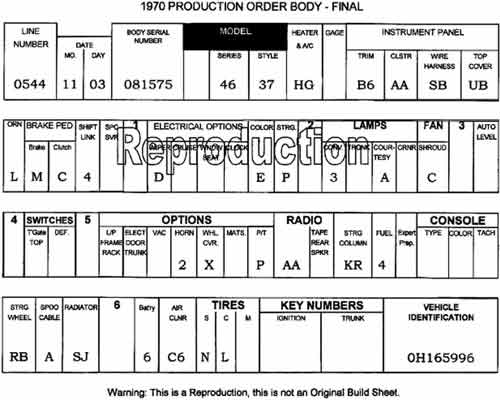 |
'Other' (GMAD) Build Sheet Please click to enlarge 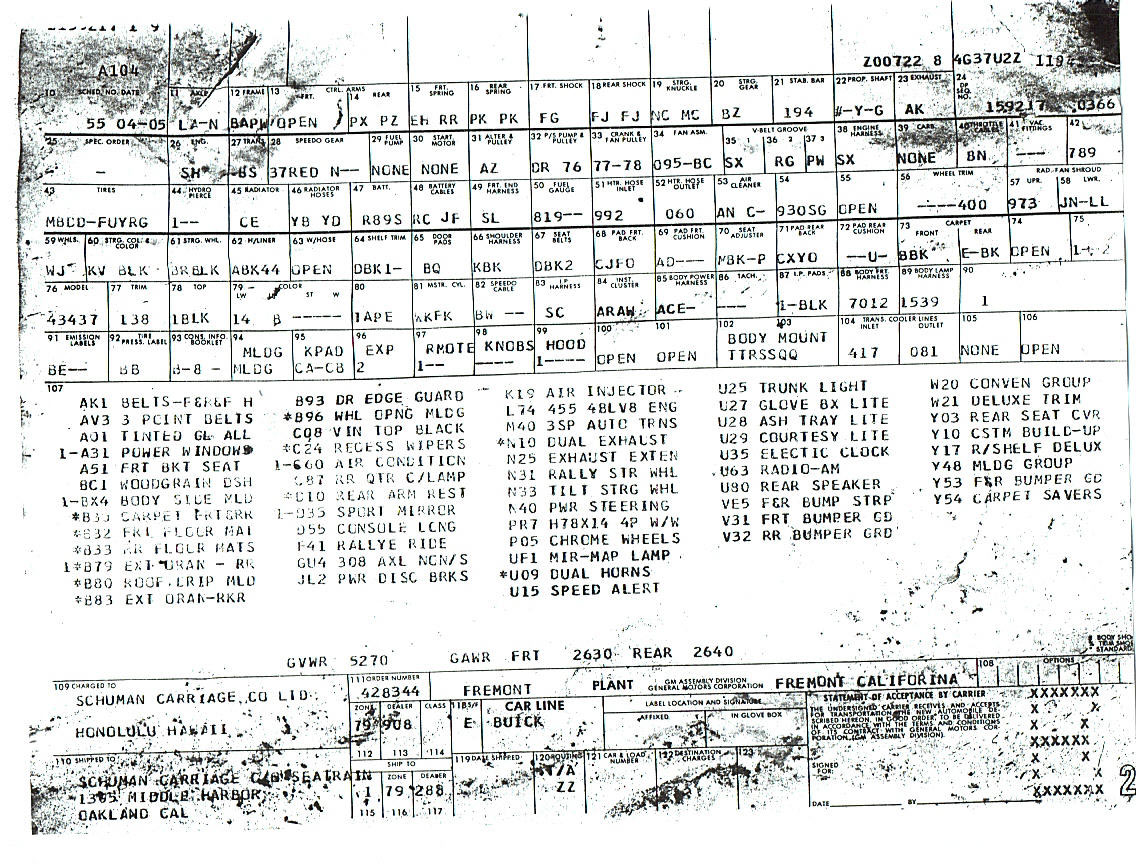 |
Important Numbers At A Quick Glance - 1969-1974
| Year | Engine Block | Engine Code | Head Casting | TH400 Code | Carburetor | Distributor | Rear
| 1969@
| 1383790
| RS
| 1231109
| BB
| 7029246
| 1111962
| 'OO' - 3.42 (A/C) | 'ON' - 3.64 (no A/C) 1970@
| 1231738
| SS
| 1231786 | 1240149# / 1240150# BB
| 7040246
| 1112016
| 'OO' - 3.42 (A/C) | 'ON' - 3.64 (no A/C) 1971&
| 1231738 / 1238861
| TS
| 1237661 | 1240145# / 1240149# OW / BB%
| 7041242
| 1112016
| 'LWB' - 3.42 | A/C and non-A/C 1972&
| 1238861 / 1241735
| WS
| 1238148 / 1242445 | 1242449# / 1242455# BB
| 7042242 (49 State) | 7042942 (California) 1112016
| 'LW' - 3.42 | A/C and non-A/C 1973&
| 1241735
| XS
| 1241860
| BB
| 7043242
| 1112087??
| 'CJ' - 3.42 | A/C and non-A/C 1974&
| 1241735
| ZS
| 1241860
| BB
| 7044242
| 1112521
| 1974 rear info needed
|
|
@ - According to Buick's official records (Daily Car Reports), all factory 1969-1970 stage1 Gran Sports built in
Flint MI (plant code 'H'). |
# - Correct year replacement head casting
|
& - Stage1 Gran Sport coupes assembled in one of three plants -
Flint MI (code 'H'), Framingham MA (code 'G'), and Fremont CA (code 'Z'). | All stage1 convertibles (1971-1972) assembled in Flint MI (code 'H') only.
% - Early 1971 model year cars will likely have an OW transmission,
while later model year cars will likely have a BB transmission.
| |
Location of Engine / Transmission Stampings
If the GS has no paperwork, and 3rd party documentation is unavailable, the original drivetrain can also prove factory Stage1 option.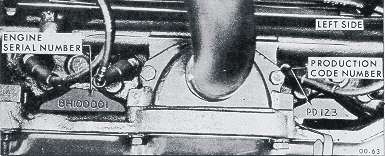 |
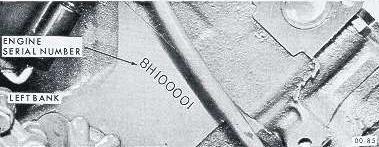
 |
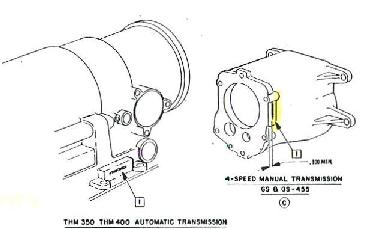 |
BB Trans Tag 
OW Trans Tag - 1971 Only  |
Common Stage1 Features - 1969-1974
- From a performance aspect, the stage1 option consisted of larger valves in the heads
(1970-up 455 engines only: intake valves increased from 2.00 to 2.125 and exhaust valves increased from 1.625 to 1.75), stiffer valve springs (used a dual spring setup),
rejetted carburetor, recurved distributor, special high-lift camshaft, high-volume fuel pump, different oil pump spring,
bigger oil pickup tube diameter (for 1969-1970 only, starting in 1971 all 455s had a 5/8'' OD tube),
heavy duty cooling (7 blade fan), special TH400 transmission (if so equipped - see below for details),
and a positive traction (posi) rear. A 10-bolt posi rear was standard for all years, with rear gear ratios of 3.64:1 for
non A/C cars and 3.42:1 for A/C cars in 1969 and 1970. Starting in 1971, all stage1 Gran Sports
received 3.42:1 rear gear ratios. While not the norm, it was possible for cars built at a GMAD plant
(like Framingham MA) to have received a 12 bolt rear from the factory. If a rear was needed to keep the assembly line
moving, the line workers used what was available.
- From an appearance aspect, all factory stage1 Gran Sports came with chrome valve covers, nuts, and wire loom
studs. 1969 model year cars had valve stickers which stated '400-4 Stage 1' and contained 'Stage 1' hood emblems
alongside the ram air scoops. 1970 - 1974 model year cars had an air cleaner decal which stated 'Stage 1'.
1970-1972 Gran Sport models had stage 1 badges on the fender under the 'GS' emblems, while 1973-1974 models had stage1 badges
at the front of the fenders.
- Engine production codes for all years are two digits and are stamped between the #5
and #7 spark plugs (drivers side rear), on the surface of the block just
below the head (figure E1). The second digit must be an 'S'. The engine VIN stamping
location varies from year to year, and each year's location is also identified figure E1.
- Automatic transmissions have a tag on the passenger side (figure T2) that contains the
code identifying the transmission application. Stage1 GSs came with heavy duty transmissions with a 2.48 first
gear. ALL had (or were supposed to have) steel flat washers (instead of wave type) and 6 plate clutch packs
(instead of 5 plates with wave washers). These types of transmissions were referred to as a 'Cadillac sprag'
transmissions, and were used in high torque applications. The servo spring was different,
in addition to the valve body pressure. The following was taken from a post on www.v8buick.com
by TH400 expert Mark DeConti
"The 70 BB Stage 1 was unique. The later valve bodies were not setup like it, though close. Not all 70 Stage 1 BB's had the 6 clutch drum, it depended on the build date as it was used after a certain point. A lot of 70 BA's had the 6 clutch drum too. The BB's used a different direct piston which improved the 3 gear shift. The 70 BA valve body is VERY close in design to the 70 BB and only a spring in the 1-2 accumulator valve needs to be removed to make it the same. No waved steel plates were used in the 2nd and 3rd gear clutch packs on the Stage 1 trans, and the 3rd gear valve body accumulator spring was softer to firm up the shift. The governor was setup to shift at approx. 5500 rpm and was specific to 1970 BB only (some model of Pontiac and maybe Olds used it too). Later governors were ok, but closer to 5200 rpm. The valve body separator plate has larger holes in places to increase pressure to the clutches. Am pretty sure that 70 was by itself and 71-72 was different."
...............................................................
"On the 70 models, higher rpm governor. no wave plates in 2nd and 3rd clutch packs and the 3rd clutch piston was different on 6 clutch pack units. Valve bodys were setup for firmer shifts (1-2 accumulator valve spring removed and s ofter 2-3 accumulator) and shift plates were different. Some of these mods were carried over to 71 and later, but not as extensive as 70. Also, not all 70 Stage 1 trans had 6 clutch 3rd packs. The 5 clutch packs were used until a certain build date in both. Then both used 6 clutch packs with the Stage 1 units getting the special piston. At least this is what I have found on the ones I have worked on."
- Manual transmissions do not have any significant codes to prove it's a
factory stage1 Gran Sport. The VIN is stamped vertically on the passenger
side of the transmission (figure T1). The Muncie stamping is
right below this. The stamping can be decoded at 5speeds.com,
and the deciphered date should be consistent with the build date/model year of the car.
- Stage1 heads do not have a special casting number over non-stage1 heads. You need to remove the head and look at
the valves. Stage 1 heads contain valves which 'almost' touch. Here are pictures of standard valves versus stage1 valves.
Pictures courtesy of George Nenadovich at BuickPerformanceClub.com.
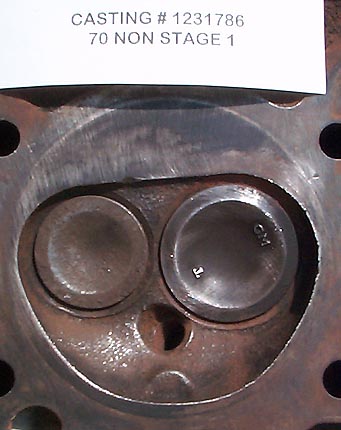
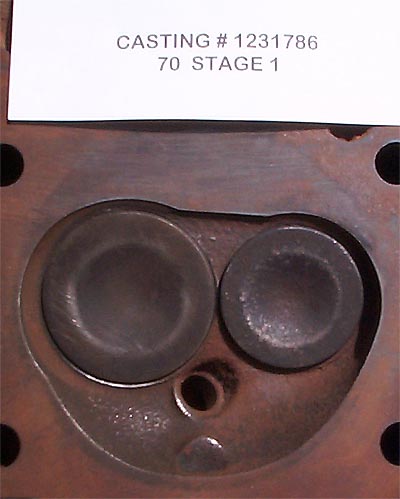
1969

VIN
All 1969 factory Stage1 Gran Sports (1256 coupes/212 convertibles) were GS400s built in Flint Michigan. That means that the VIN must start with either 446379H for a coupe or 446679H for a convertible.
Visual Identification
The hood has two Stage1 emblems, in addition to a '400-Stage1' sticker on chrome valve covers. Some air cleaner lids were chrome, while others were black. The chrome air cleaner lid was a 'dress-up' option available to any GS model.
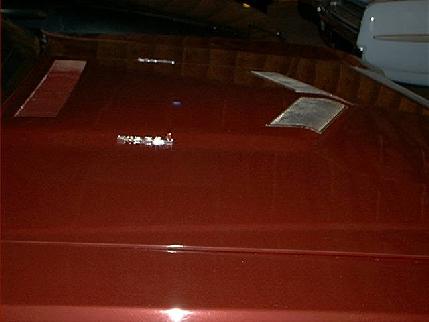

1969 Engine Identification
- If the engine is original, the 'Engine Serial Number' (figure E1) should read 9 digits - a '4' (for Buick), followed by the last 8 digits of the VIN. If the VIN is 446379H100001, the engine serial number would be 49H100001.
- The 'Engine Production Code Number' (figure E1) will depict the engine option - 'RS' is Stage1. A complete list of 'Engine Production Code Numbers' can be found on Buicks.net
- Block/Head casting numbers, in addition to carburetor/distributor numbers can be found Here.
- If the transmission is original, the 'Transmission Serial Number' (figure T1) should read 9 digits - a '4' (for Buick), followed by the last 8 digits of the VIN. If the VIN is 446379H100001, the transmission serial number would be 49H100001.
- If a TH400, the 'Transmission Code' (figure T2) will depict the transmission type - 'BB' is Stage1 - just make sure the serial number (figure T1) matches the VIN. A complete list of Buick TH400 transmission codes can be found on Buicks.net
- If a manual transmission, there are no significant codes to prove the stage1 option, but the Muncie stampings can be can be decoded Here
1970

VIN
All 1970 factory Stage1 Gran Sports (2865 coupes (includes 400 GSXs)/232 convertibles) were GS455s built in Flint Michigan. That means that the VIN must start with either 446370H for a coupe or 446670H for a convertible.
Visual Identification
Each fender has a 'Stage 1' emblem under the 'GS' emblem, in addition to a stage 1 decal on top of a black air cleaner lid. The valve covers are chrome, in addition to the nuts and spark plug wire retaining posts. There should be a 7-blade fan (Heavy Duty cooling).


1970 Engine Identification
- If the engine is original, the 'Engine Serial Number' (figure E1) should read 9 digits - a '4' (for Buick), followed by the last 8 digits of the VIN. If the VIN is 446370H100001, the engine serial number would be 40H100001. For cars built later in the model year, it is possible for the engine serial number to be located on the front of the block as depicted in figure E2
- The 'Engine Production Code Number' (figure E1) will depict the engine option - 'SS' is Stage1. A complete list of 'Engine Production Code Numbers' can be found on Buicks.net
- Block/Head casting numbers, in addition to carburetor/distributor numbers can be found Here.
- If the transmission is original, the 'Transmission Serial Number' (figure T1) should read 9 digits - a '4' (for Buick), followed by the last 8 digits of the VIN. If the VIN is 446370H100001, the transmission serial number would be 40H100001.
- If a TH400, the 'Transmission Code' (figure T2) will depict the transmission type - 'BB' is Stage1 - just make sure the serial number (figure T1) matches the VIN. A complete list of Buick TH400 transmission codes can be found on Buicks.net
- If a manual transmission, there are no significant codes to prove the stage1 option, but the Muncie stampings can be can be decoded Here
1971
VINIn 1971, Buick changed the attributes of the VIN in that the VIN does not indicate the engine size. The VIN will only tell you if it's a Gran Sport model, and does not indicate if the car was built with a 350, 455, or 455 stage1 motor.
- All 81 1971 factory Gran Sport convertible Stage1 cars were ONLY built in Flint MI (plant code 'H'), meaning the VIN must start with 434671H.
- The 801 hardtops were built in one of three plants -
- Flint MI (VIN starting with 434371H - 612 cars)
- Framingham MA (VIN starting with 434371G - 56 cars)
- Fremont CA (VIN starting with 434371Z - 133 cars)
Same as 1970 above.
1971 Engine Identification
- If the engine is original, the 'Engine Serial Number' (figure E2) should read 9 digits - a '4' (for Buick), followed by the last 8 digits of the VIN. If the VIN is 434371H100001, the engine serial number would be 41H100001. It is also possible for the engine serial stamping to be in the same location on the passenger side of the block. Remember, never say never.
- The 'Engine Production Code Number' (figure E1) will depict the engine option - 'TS' is Stage1. A complete list of 'Engine Production Code Numbers' can be found on Buicks.net
- Block/Head casting numbers, in addition to carburetor/distributor numbers can be found Here.
- If the transmission is original, the 'Transmission Serial Number' (figure T1) should read 9 digits - a '4' (for Buick), followed by the last 8 digits of the VIN. If the VIN is 434371H100001, the transmission serial number would be 41H100001.
- If a TH400, the 'Transmission Code' (figure T2) will depict the transmission type - 'BB' or 'OW' is Stage1 - just make sure the serial number (figure T1) matches the VIN. A complete list of Buick TH400 transmission codes can be found on Buicks.net
- If a manual transmission, there are no significant codes to prove the stage1 option, but the Muncie stampings can be can be decoded Here
1972
VINStarting in 1972, the Buick changed the VIN coding again to identify the motor option. VIN alone can prove the car came from the factory with the stage1 option. If the 5th digit is a 'V', the car is a stage1.
- All 81 1972 factory Gran Sport convertible Stage1 cars were ONLY built in Flint MI (plant code 'H'), meaning the VIN must start with 4G67V2H.
- The 728 hardtops were built in one of three plants -
- Flint MI (VIN starting with 4G37V2H - 463 cars)
- Framingham MA (VIN starting with 4G37V2G - 147 cars)
- Fremont CA (VIN starting with 4G37V2Z - 118 cars)
Same as 1970 above.
1972 Engine Identification
- If the engine is original, the 'Engine Serial Number' (figure E2) should read 9 digits - a '4' (for Buick), followed by the last 8 digits of the VIN. If the VIN is 4G37V2H100001, the engine serial number would be 42H100001. It is also possible for the engine serial stamping to be in the same location on the passenger side of the block. Remember, never say never.
- The 'Engine Production Code Number' (figure E1) will depict the engine option - 'WS' is Stage1. A complete list of 'Engine Production Code Numbers' can be found on Buicks.net
- Block/Head casting numbers, in addition to carburetor/distributor numbers can be found Here.
- If the transmission is original, the 'Transmission Serial Number' (figure T1) should read 9 digits - a '4' (for Buick), followed by the last 8 digits of the VIN. If the VIN is 4G37V2H100001, the transmission serial number would be 42H100001.
- If a TH400, the 'Transmission Code' (figure T2) will depict the transmission type - 'BB' is Stage1 - just make sure the serial number (figure T1) matches the VIN. A complete list of Buick TH400 transmission codes can be found on Buicks.net
- If a manual transmission, there are no significant codes to prove the stage1 option, but the Muncie stampings can be can be decoded Here
1973
VINVIN alone can prove the car came from the factory with the stage1 option. If the 5th digit is a 'V', the car is a stage1.
1974
VINVIN alone can prove the car came from the factory with the stage1 option. If the 5th digit is a 'V', the car is a stage1.